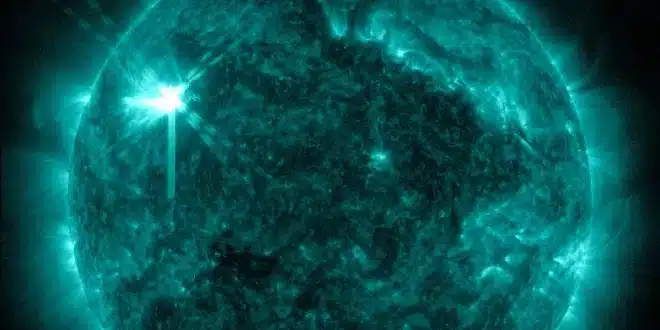On Thursday, March 28, a significant solar flare, potent enough to ionize a segment of the Earth’s atmosphere, was observed emanating from the sun. This intense solar activity was detected using satellites operated by the National Oceanic and Atmospheric Administration (NOAA).
This particular flare has been classified as an X1.1 flare, as reported by Live Science. Solar flares, which are massive eruptions on the sun’s surface, occur when the sun’s magnetic fields abruptly realign, releasing substantial amounts of electromagnetic radiation in the process.
NASA explains that X-class flares represent the most intense category of solar eruptions.
The power of this flare was such that it caused a significant shortwave radio blackout across the Pacific Ocean, as noted by Space Weather.
Additionally, this solar flare was accompanied by a coronal mass ejection (CME), a massive burst of plasma from the sun’s atmosphere. While initial predictions suggested a possible collision with Earth, it now appears likely that this CME will bypass our planet. A direct hit from such CMEs could lead to geomagnetic storms, affecting satellite operations.
This event follows a remarkable “double” X-class flare that took place on Monday, March 25, triggering the most severe geomagnetic storm observed since 2018.
The March 25 phenomenon involved a “sympathetic solar flare,” characterized by two simultaneous solar explosions.
These recent activities suggest that the Sun may have entered a phase of heightened explosive activity, known as a solar maximum, which marks the peak period in the Sun’s 11-year cycle. Interestingly, this solar maximum has commenced a year earlier than previously anticipated by forecasts.


